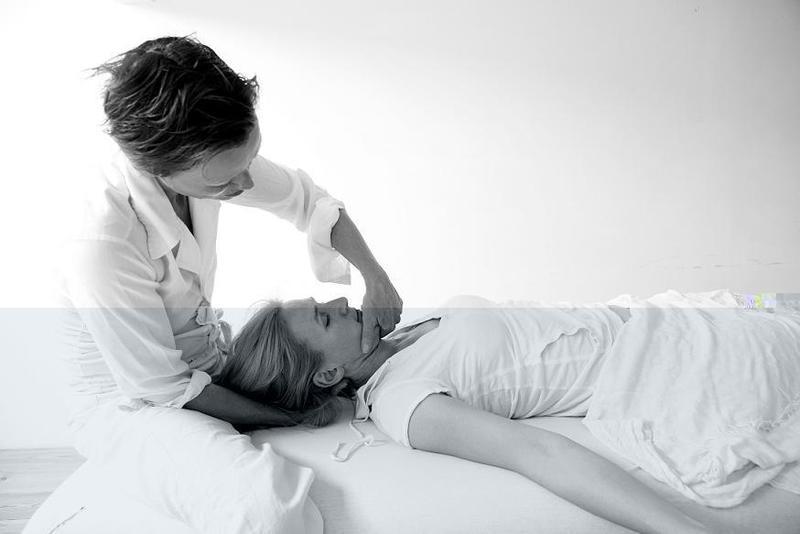Trager Approach compared to Occupational Therapy
Trager Approach compared to Occupational Therapy
The Trager Approach, also referred to as Trager Psychophysical Integration, is a gentle, non-invasive method of using body movements to “re-educate” the body and mind in order to facilitate pain-free movement and a sense of complete relaxation. Developed by Dr. Milton Trager, the approach consists of two distinct phases. The first is a passive session, during which the Trager practitioner methodically (but not in a rigid sense) holds and manipulates body parts in order to help the client develop an understanding of what pain-free movement is possible (Scholl, 1993). The practitioner’s actions are guided by the feel of the client’s joints and tissues, as well as by the client’s verbal feedback. The second phase, in which the client practices the learned movements in everyday life, is referred to as “Mentastics”® (Trager.com).
Important aspects of this approach are the recognition that the mind and body are interconnected and constantly impacting one another; that both body and mind can be re-educated to alleviate stress and allow greater freedom of movement; that no movement ever be forced upon the client; that no movement be initiated or continued that will bring pain to the client; and that the practitioner be sensitive to the client’s needs, feelings, and condition through both physical and mental connections. Practitioners stress the importance of “being in the present” during a session, both for themselves and the client (K. Deibel, CTP, personal communication, Feb. 17, 2011). This mental connection with the client is referred to as the “hook up,” and is vital to the approach (Vanderbilt, 2004).
The Trager Approach has been successfully used to alleviate symptoms of stress, pain, stiffness in clients suffering from a variety of problems such as stroke, oxygen deprivation at birth, spinal cord damage, peripheral sensory/motor injuries, cerebral palsy, muscular dystrophy, polio, and multiple sclerosis (Juhan, 1993). Studies have been conducted which showed the effectiveness of the Trager approach for patients with Chronic Lung Disease (Witt, 1986), pain due to spinal cord injuries (Dyson-Hudson, 2001), and rigidity as the result of Parkinson’s Disease (Duval, 2002). Mastectomy patients have benefited from the mind/spirit healing aspects, as well as the physical improvements brought about by the approach (Vanderbilt).
Contraindications and precautions include fresh injuries, recent surgery, active thrombophlebitis, infectious diseases, metastatic cancer, and nerve impingements. Use of narcotics or any type of pain medication is cautioned, as these substances may mask pain while the table-work is in progress. Trager practitioners are cautioned not to work with anyone exhibiting signs of substance abuse or severe mental illness (Clark, 2011). Special precautions are advised for clients who are pregnant, especially during the first and last trimester (J. Fasone, RN, CTP, personal communication, February 24, 2011).
Like Occupational Therapy, the Trager Approach is client-centered. During a session every effort is made to ensure that the client is comfortable physically and emotionally, and that the expressed needs of the client are met. The practitioner relies on continual feedback from the client to assess and address areas of weakness and strength, tightness and freedom. The client is then responsible for his or her ongoing movement re-education through the use of Mentastics. In effect, the client is able to design a program that is sustainable, flexible, and tailored to his or her needs and everyday schedule. Progress is monitored by the client and practitioner at sessions, and can be confirmed through evaluations performed by OT or PT practitioners and medical personnel. Trager Mentastics can also be learned and practiced in a group setting (Trager Mentastics, 2010 ). Clients interested in doing this can easily organize group sessions at the local gym, church, or virtually any place with the space to accommodate the group, including a home.
The Trager Approach is by no means useful only to those who have suffered pain or disability. Anyone can benefit from getting in touch with their mind and body and letting go of the unknown restrictions being placed on them by the stresses of everyday life. Health care workers, and caregivers can use this approach to head off health problems associated with the physical and emotional stresses of providing care for others. From heavy manual labor to office work, the Trager Approach can be helpful in restoring and/or maintaining pain-free movement and a sense of emotional well-being.
The Trager Approach can be used in conjunction with many other health-promotion activities, such as Yoga, Massage Therapy, and Reiki (Clark, 2011). Occupational Therapy Practitioners may recommend it for clients who have restricted ROM, spasticity, paralysis, or physical and emotional scarring from injuries or surgeries. The increased freedom derived from the sessions can improve physical and occupational performance, and Mentastics movements may be incorporated into occupation-based activities at the clinical site or at home.
A word on what the Trager Approach is not: it is not a type of massage therapy. It is not something that is done to a client, but is an approach that requires the active attention of both the client and the practitioner. It is not, in most cases, a reimbursable service. Although the Trager Association requires that practitioners be certified with a minimum of 226 hours of instruction and fieldwork, as well as ongoing education (Association, 2009), most insurance providers do not yet recognize it as a therapy. However, as research continues to prove the efficacy of the Trager Approach it will most likely become recognized as a very viable and valuable approach to health promotion and maintenance.
by Judy Fasone
Be the first to post a message!
